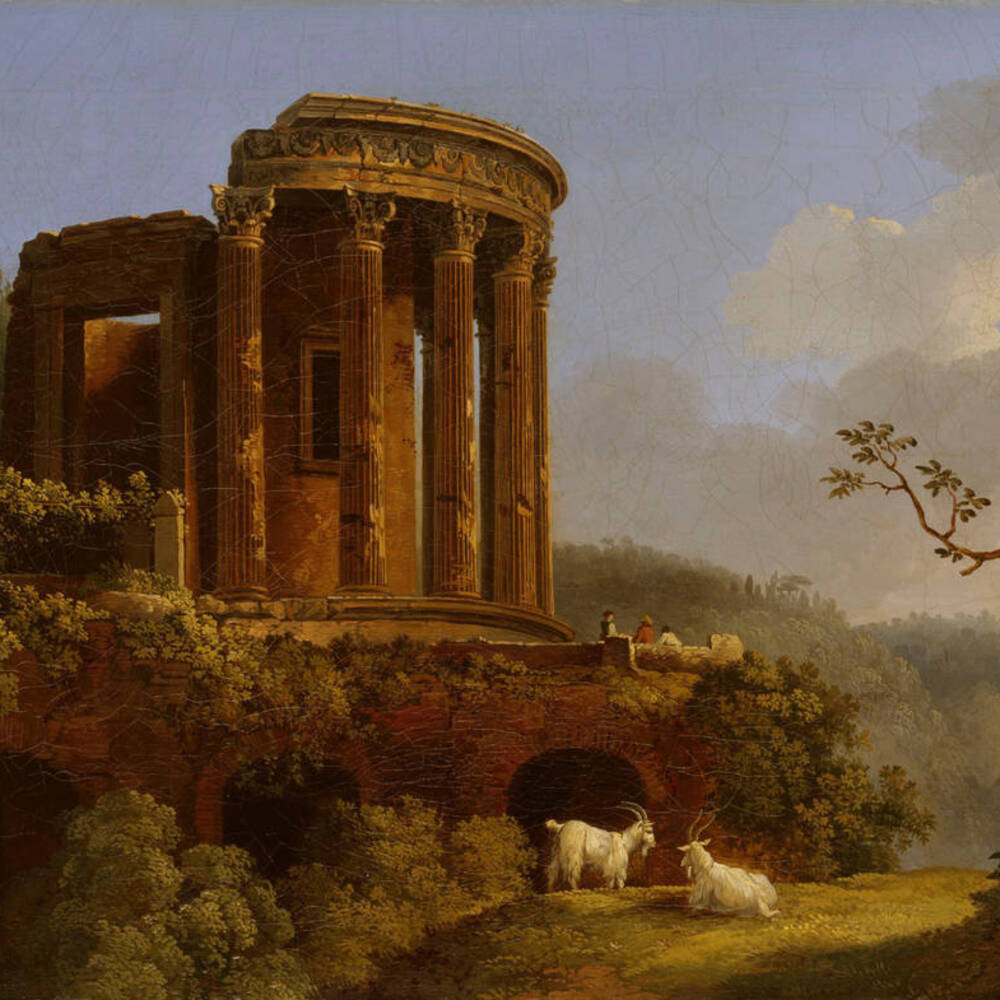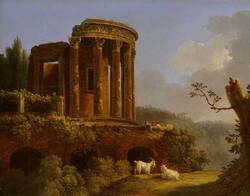Shortly after Hackert settled in Rome in 1769, he visited Tivoli, to the east of the city. With its waterfall and ancient buildings, it was one of the major attractions for many travellers to Italy. He painted the famous round temple consecrated to the goddess Vesta, as guardian of the holy fire, amidst an ideal yet natural-looking landscape. His painting is an atmospheric combination of architecture and nature. Over the course of his career, he repeatedly made use of motifs inspired by Tivoli.
Further Media
In his Italian Journey, German writer Johann Wolfgang von Goethe described an excursion with Hackert in June 1787.
‘I went out to Tivoli with Hackert, who is a master of copying nature and has such a sure hand that he never has to correct a drawing. In these few days, I have learned a good deal from him.’
They had first met in February in Naples, where Hackert was court painter of King Ferdinand IV. As Goethe noted with some amazement, Hackert even had his own apartment in the palace.
From Britain to Tsarist Russia under Catherine the Great, the European royal courts were only too keen to acquire Hackert’s landscape paintings. In 1811, some years after Hackert died, Goethe wrote a biography of the artist, including a very vivid description of the demand for the artist’s works:
‘…All important foreign visitors of every standing and rank visited him; and even though (…) he raised the price for his future paintings by around one third, he always had orders for Holland, England, Germany, Poland and Russia, often six or seven years in advance, so that some admirers of his art died before they could come into the possession of their desired painting.’
The provenance of this painting has a story to tell about Germany’s complex post-war history. Once, this painting was kept in Schloss Frohburg, near Leipzig, on an estate belonging to the von Nidda and von Falkenstein family, an old aristocratic family in Saxony. After the end of the war, this part of Germany became East Germany. In the wake of East Germany’s agrarian land reform, not only were the family’s estates expropriated, but also their cultural property. In this way, the painting entered the Dresden collections in 1952.
In 1998, nearly ten years after the Berlin Wall fell, the painting was restituted to the family’s heirs. In 2011, after lengthy negotiations, it finally proved possible to acquire this important early work by Hackert for the Dresden collections.
Given Hackert’s reputation during his lifetime, it may seem surprising the royal collections did not acquire any of his works at that time. But Elector Friedrich August II, the son of August the Strong and one of the great art patrons of his day, died in 1763, when Hackert was still a young man. 1763 also saw Saxony’s defeat in the Seven Years War – and after that, the court had more pressing calls on its coffers than the acquisition of new art works.
- Location & Dating
- c. 1770/75
- Material & Technique
- Oil on canvas
- Dimenions
- 45 x 55,9 cm
- Museum
- Gemäldegalerie Alte Meister
- Inventory number
- Gal.-Nr. 3146

